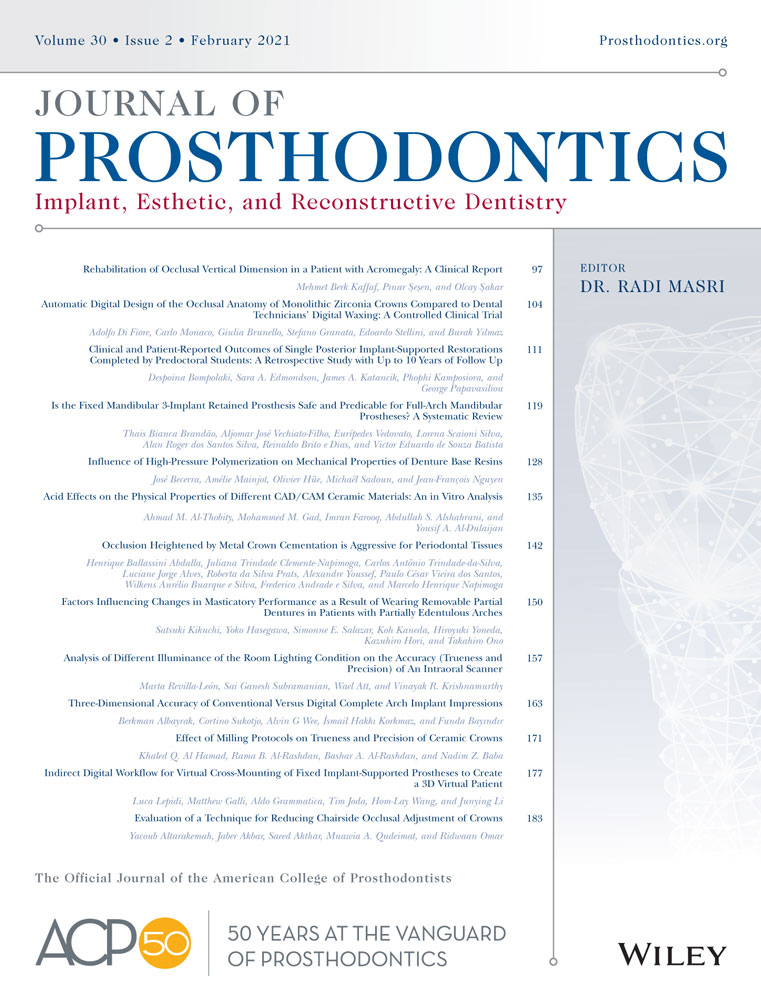Automatic Digital Design of the Occlusal Anatomy of Monolithic Zirconia Crowns Compared to Dental Technicians’ Digital Waxing: A Controlled Clinical Trial
Conflict of interest statement: The authors have no commercial or financial dealings that may pose a conflict of interest or potential conflict of interest.
[Correction added on 27 October 2020 after first online publication: Dr. Yilmaz's affiliations have been corrected.]
Abstract
Purpose
Reconstructing the occlusal morphology of posterior teeth in definitive dental prosthesis can be challenging. The use of the correlation technique enables replication of the information and occlusal anatomy of interim dental prostheses to the definitive ones. The purpose of this controlled clinical trial was to compare the static and dynamic contacts (SDC) of monolithic zirconia crowns designed with correlation and library techniques.
Material and Methods
Twenty-four patients were included in the study for a total of 28 molars. For each abutment tooth, an interim crown was fabricated and two digital scans, with and without the interim crown in place were made. Two single crowns were designed using correlation and library techniques. Fifty-six monolithic zirconia crowns were milled. The interim and definitive crowns were evaluated intraorally for SDC by using a 24-μm-thick blue articulating foil. After removing the interim and definite crowns, extraoral photographs were taken to calculate the SDC area using software (ImageJ) and analyzed by the Kruskal-Wallis test.
Results
The average and ± standard deviation (SD) of area of the occlusal marks on interim crowns was 32.27 ± 3.45 mm2. Definitive crowns designed by using the correlation technique had an area of 31.01 ± 3.73 mm2; the area in the library technique was 36.85 ± 5.78 mm2. No statistically significant difference was found (p = 0.091) between the occlusal mark areas of the interim and definitive crowns designed by using the correlation technique. Whereas, there were significant differences between the areas of occlusal marks of the interim and definitive crowns designed by using the library technique, and between the areas of occlusal marks of definitive crowns designed by using the correlation and library techniques (p < 0.001).
Conclusion
The average area of the SDC of monolithic zirconia crowns designed by using the correlation technique was similar to that of interim crowns. The library technique was less effective when replicating the SDC compared to the correlation technique.




